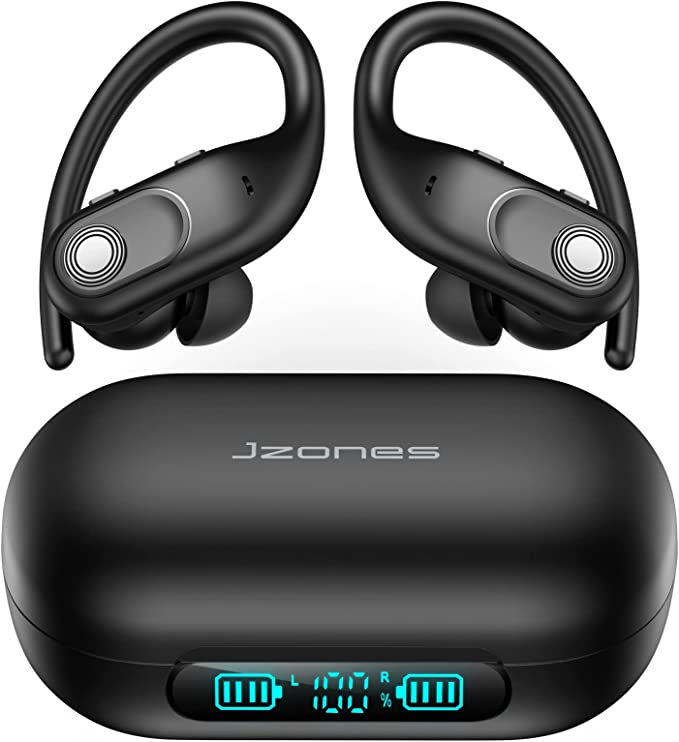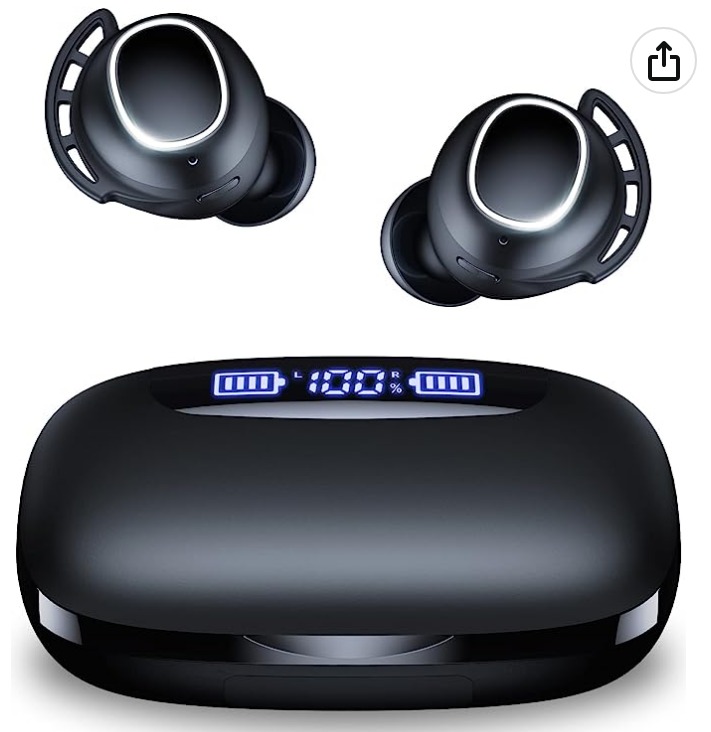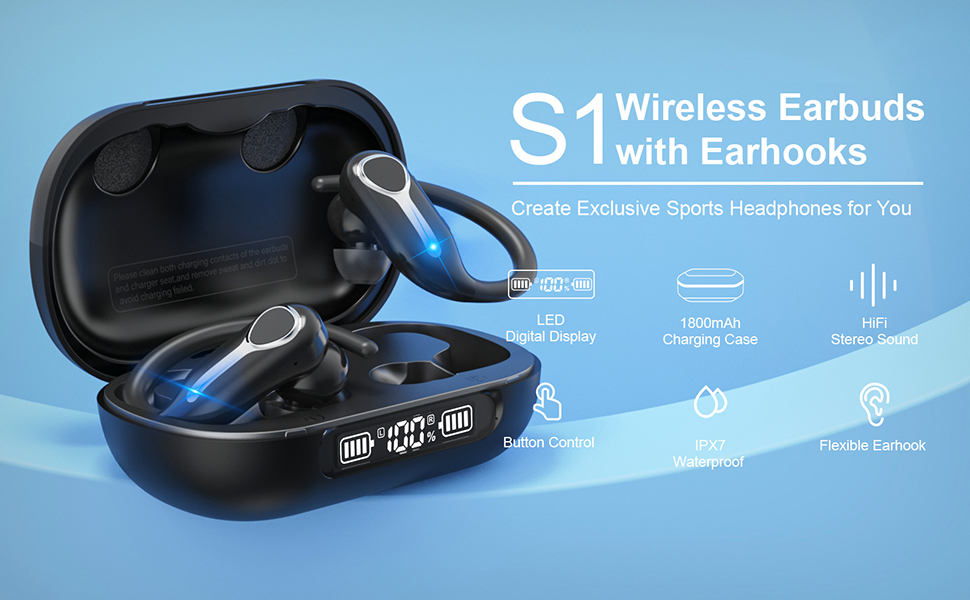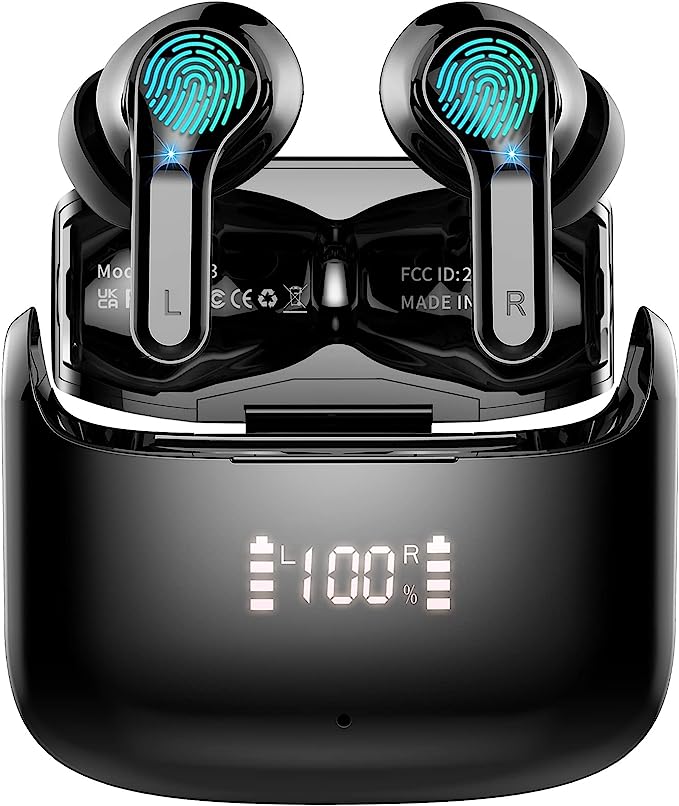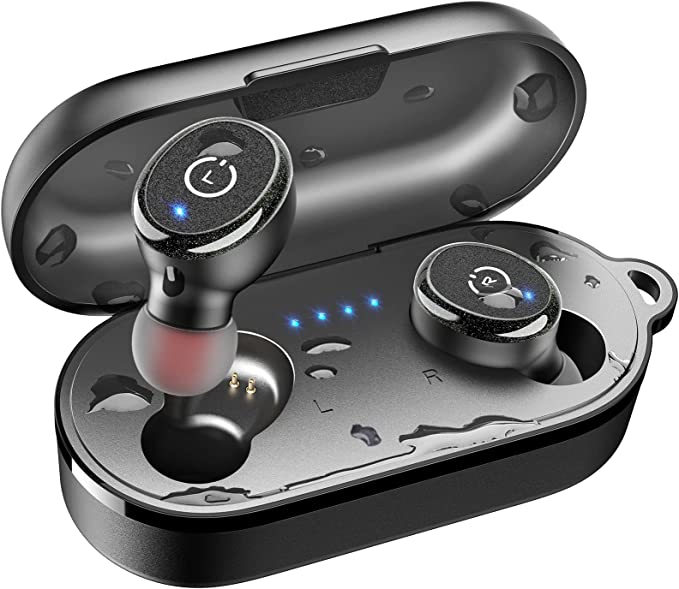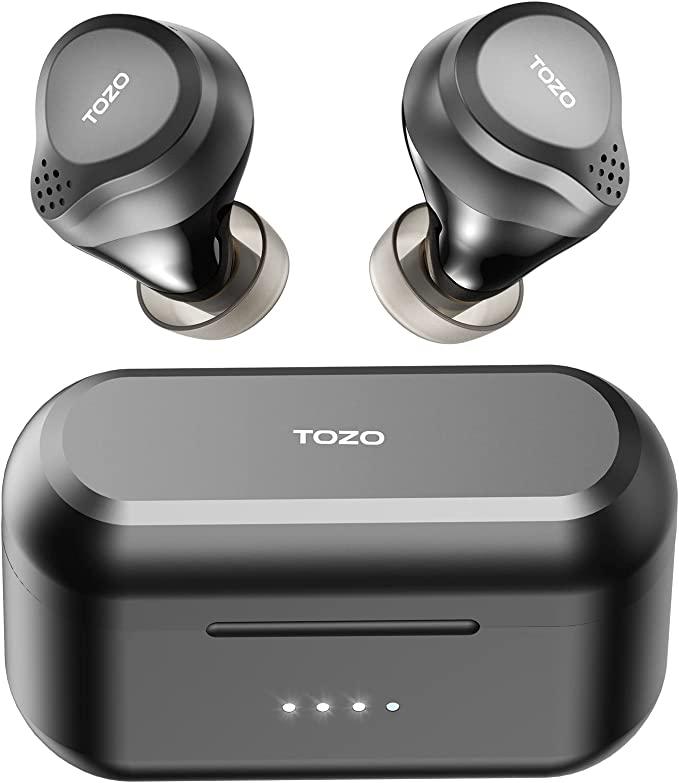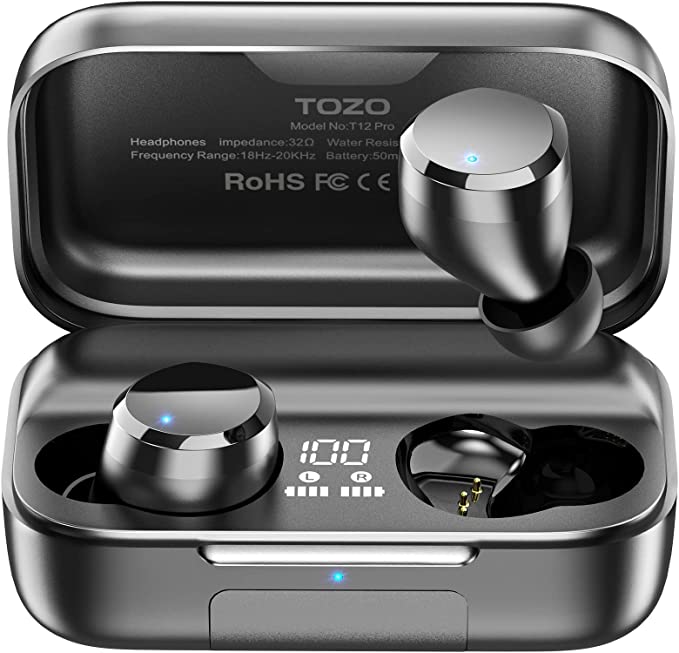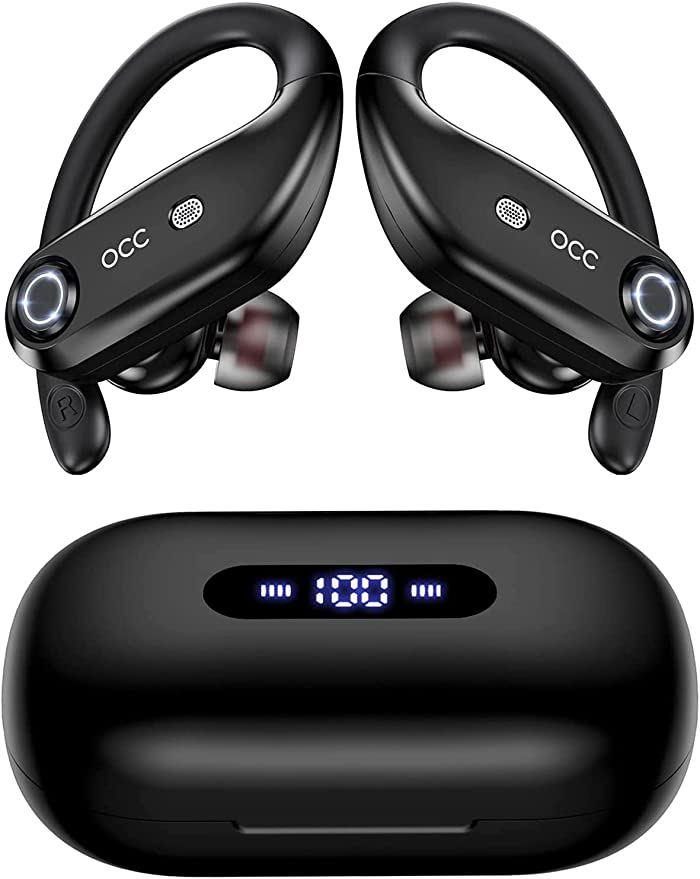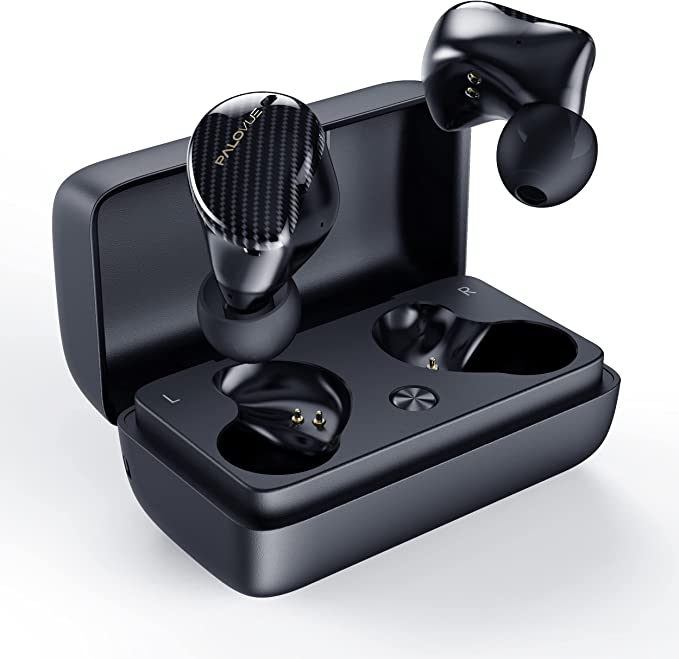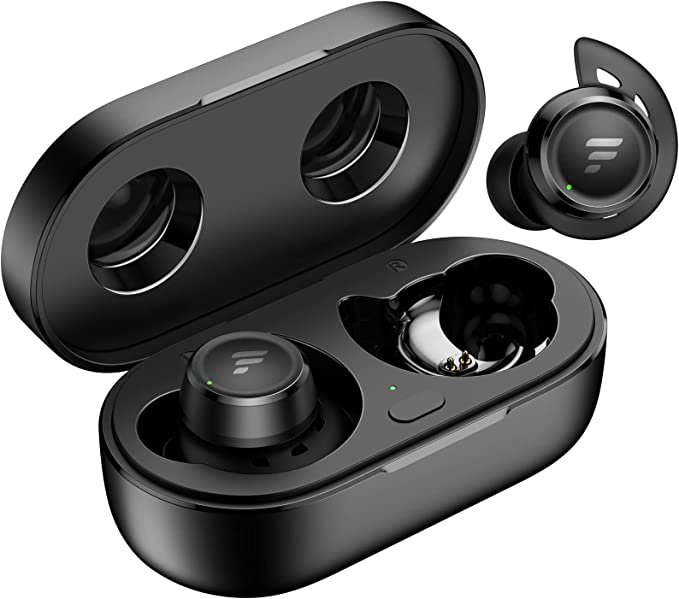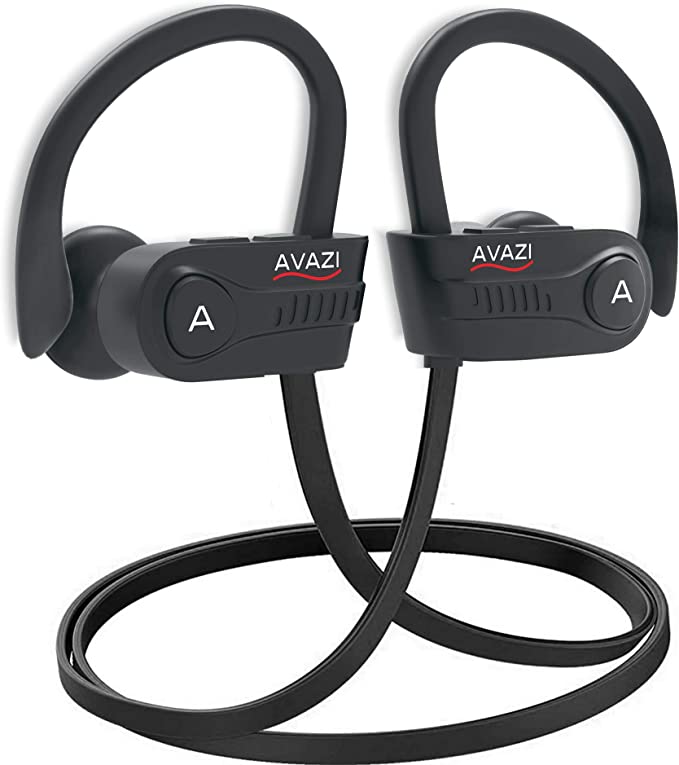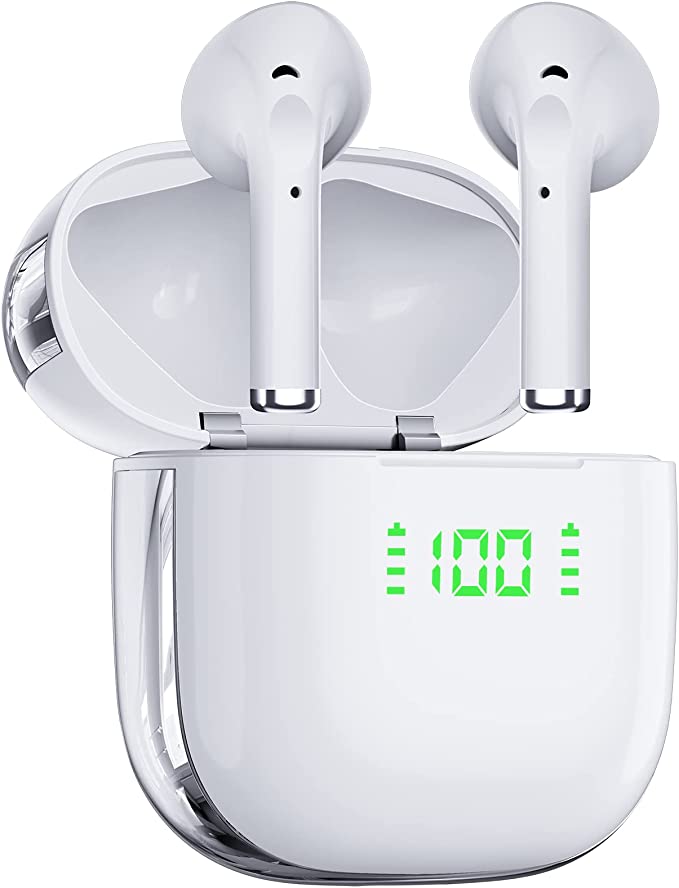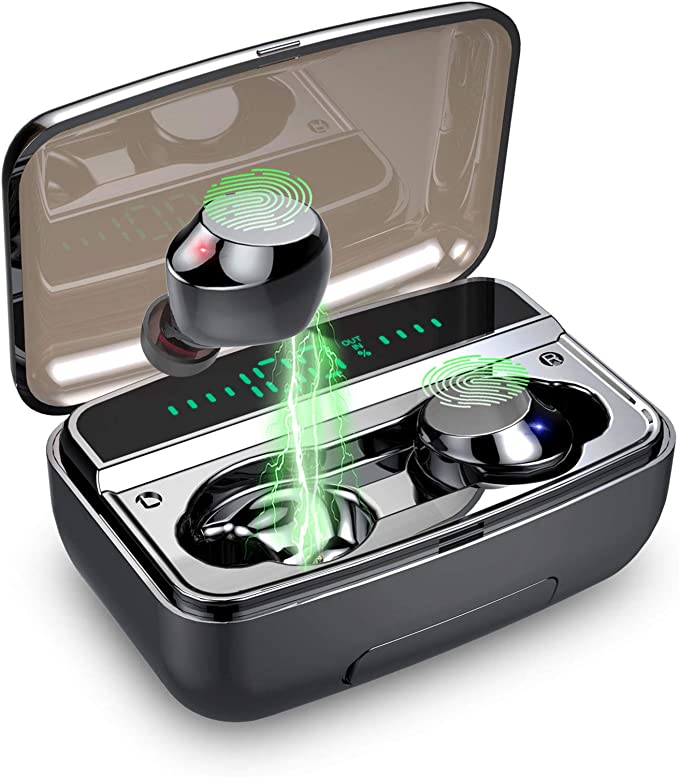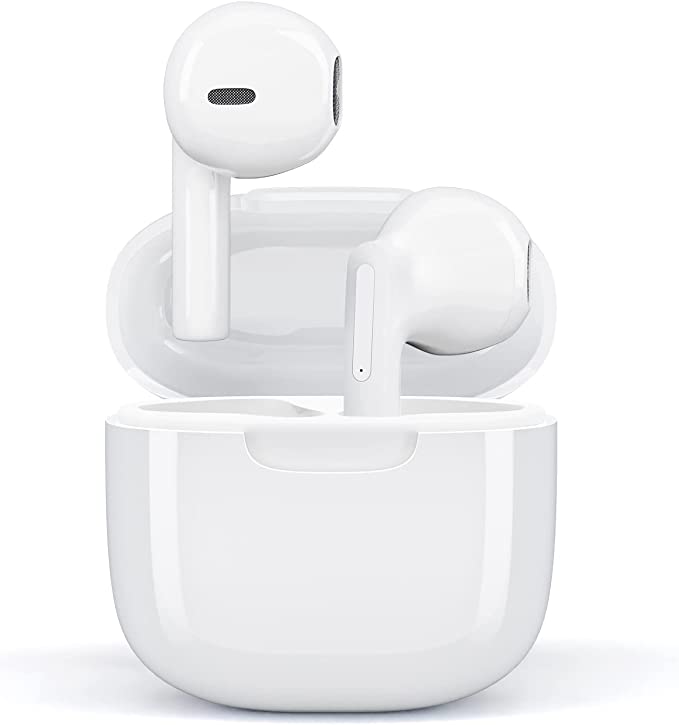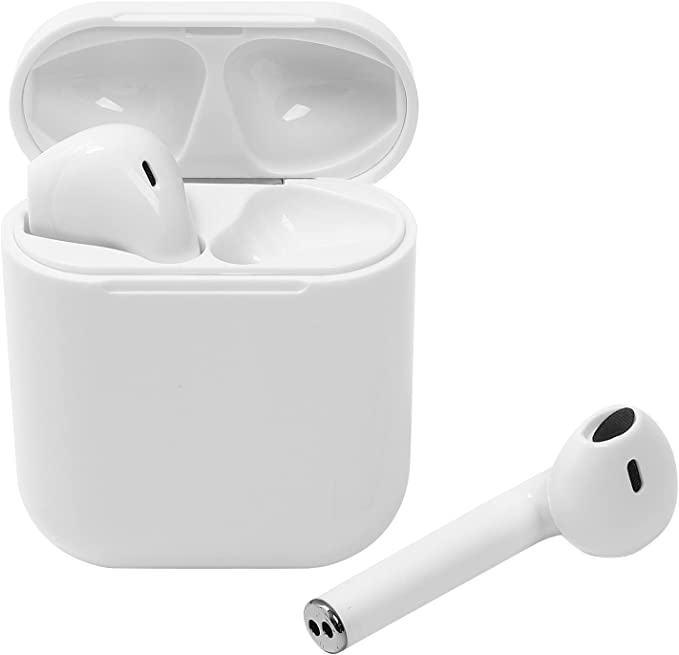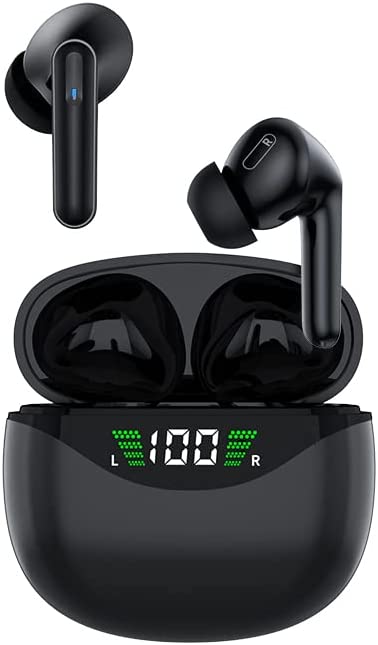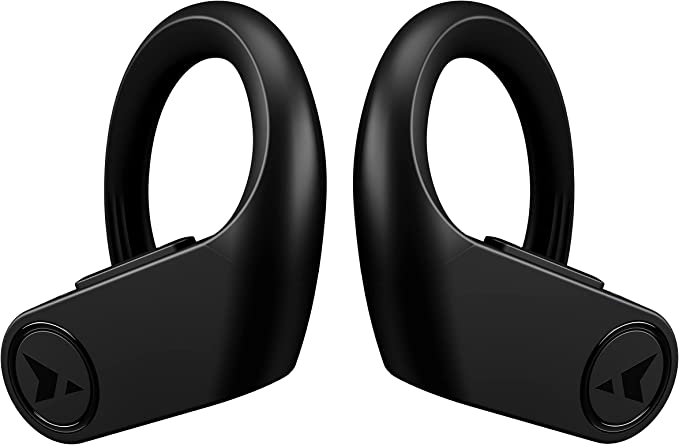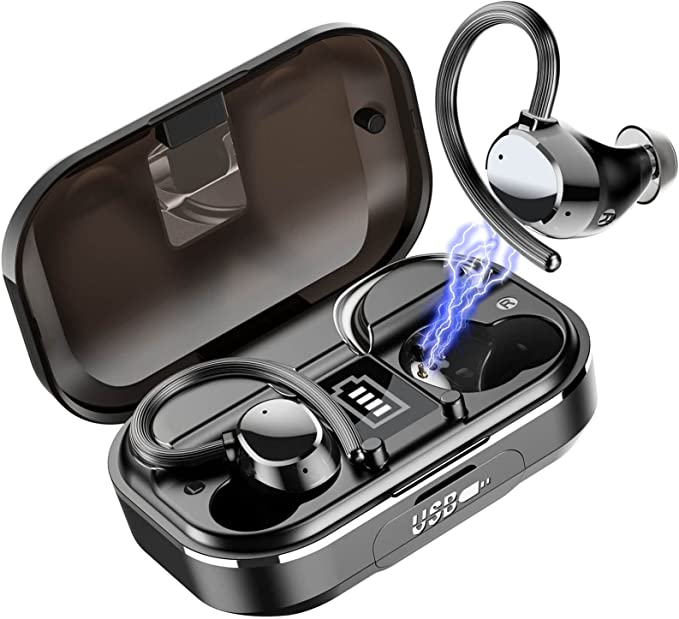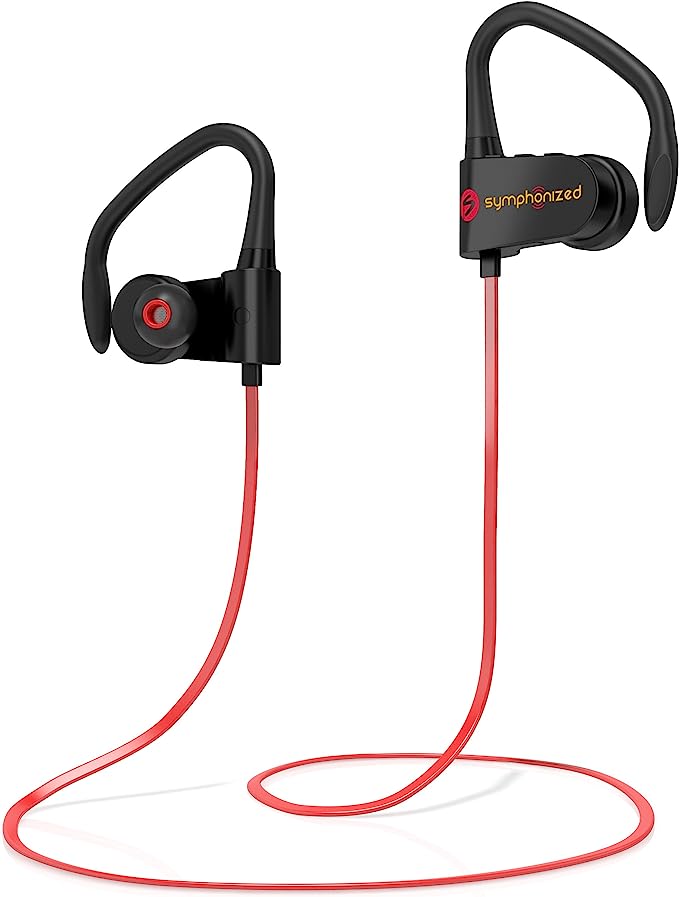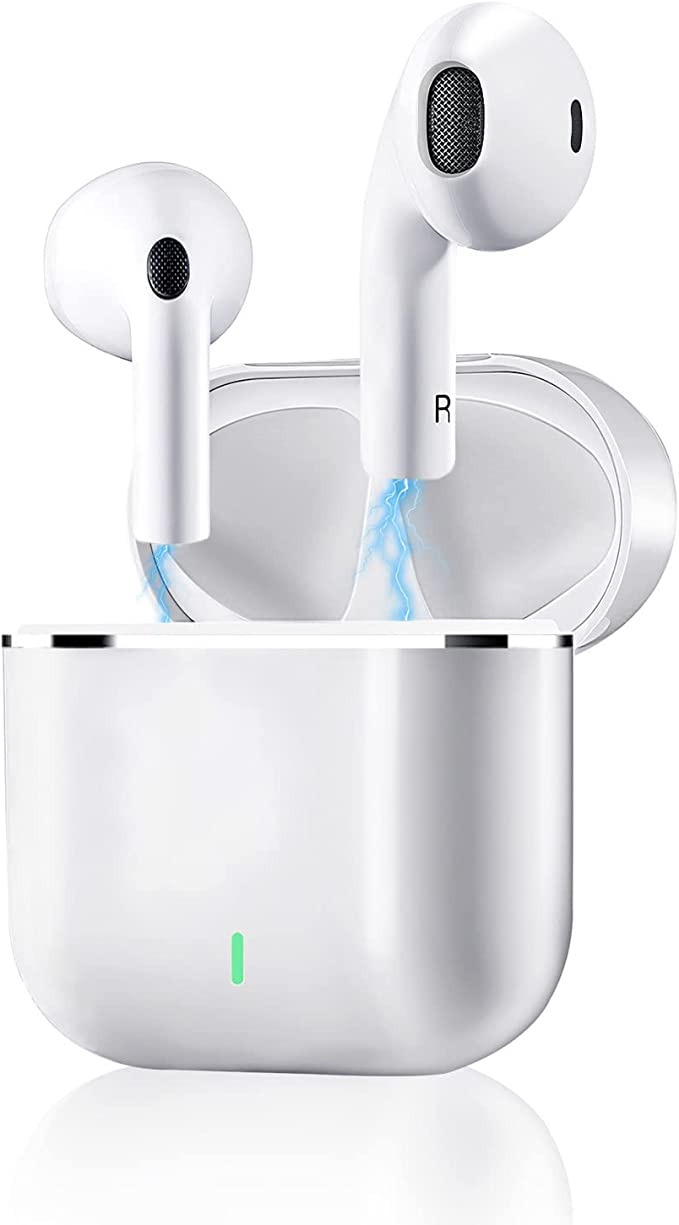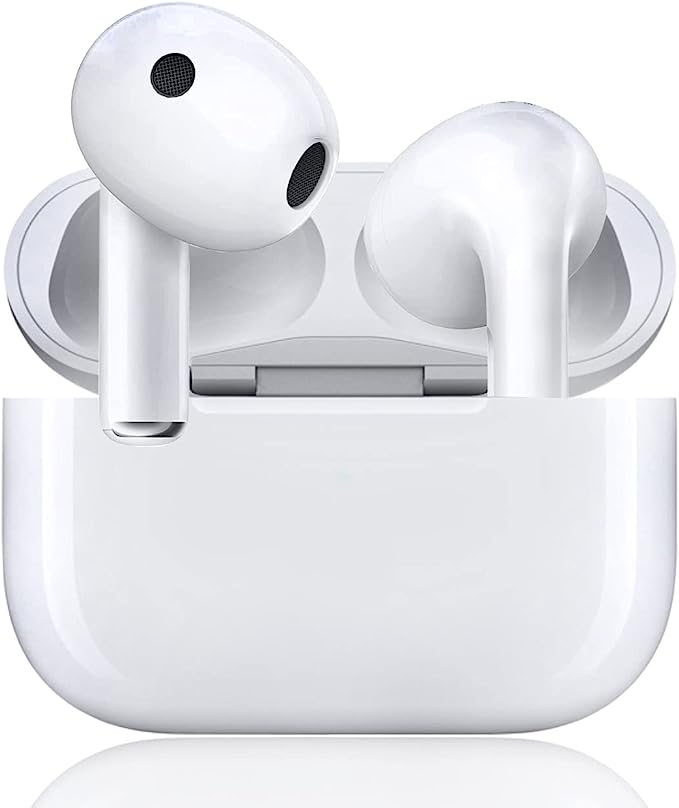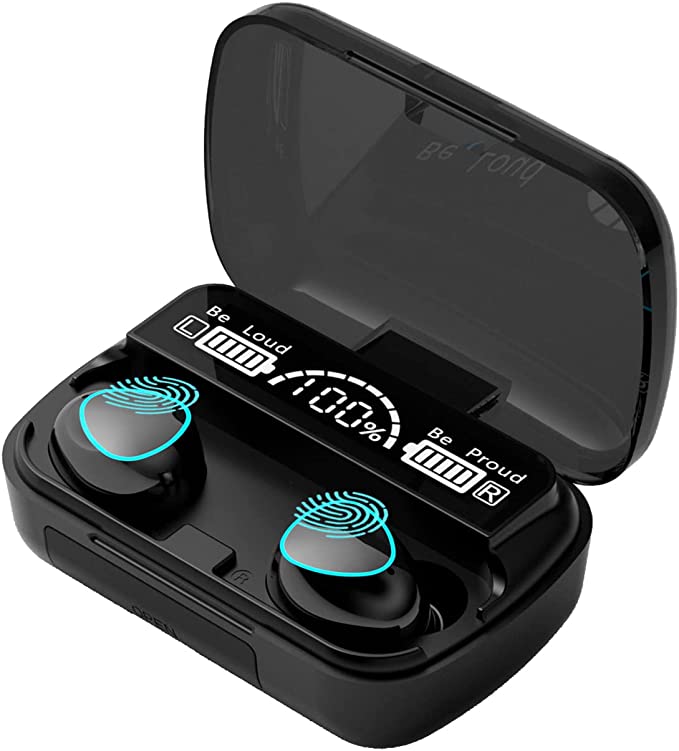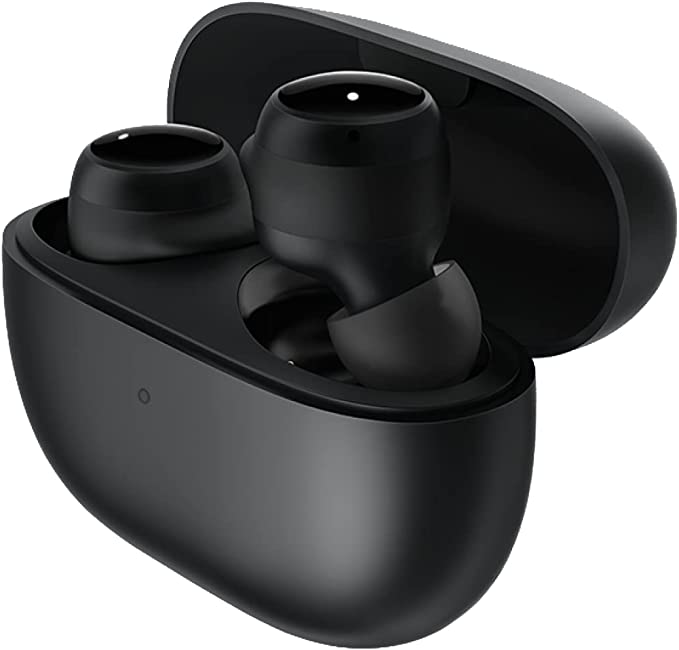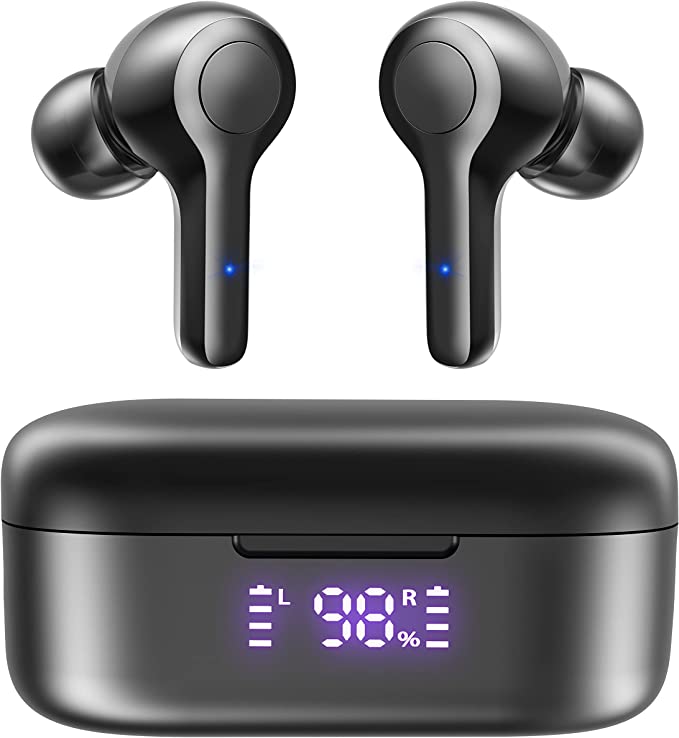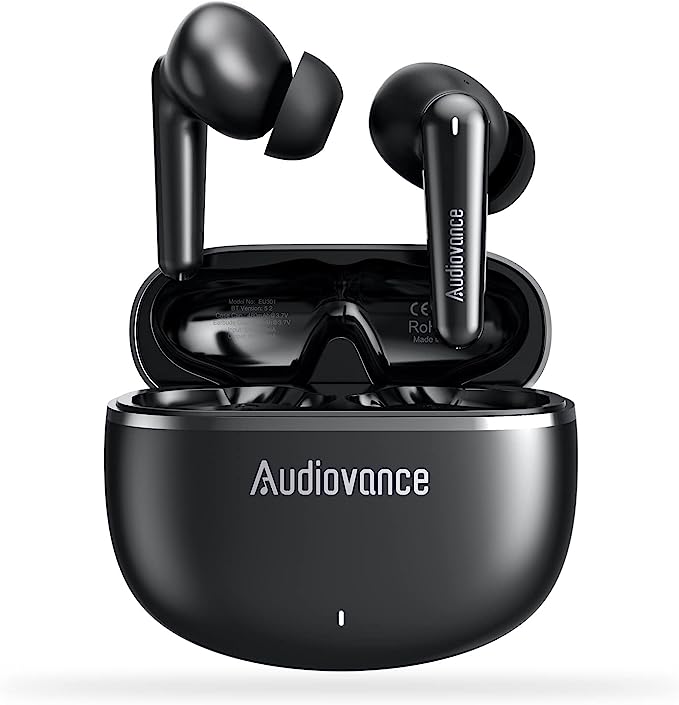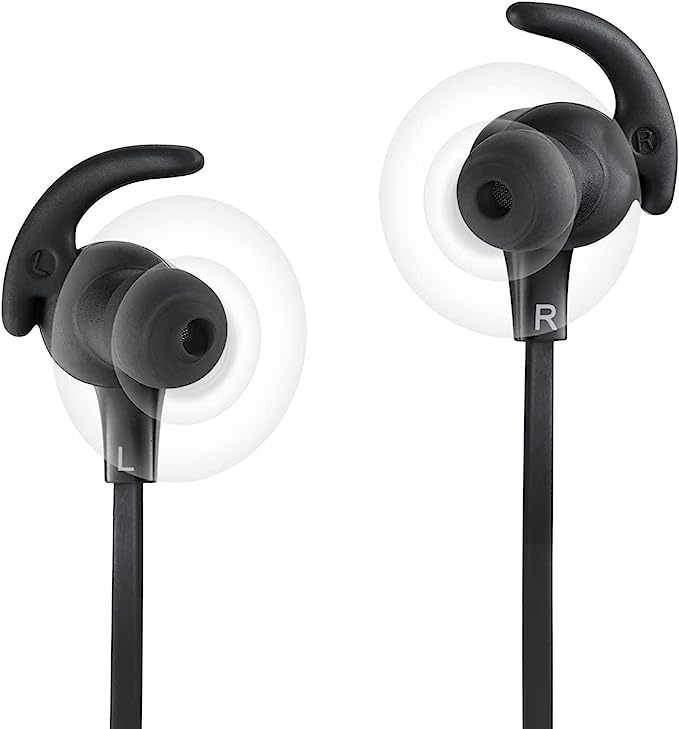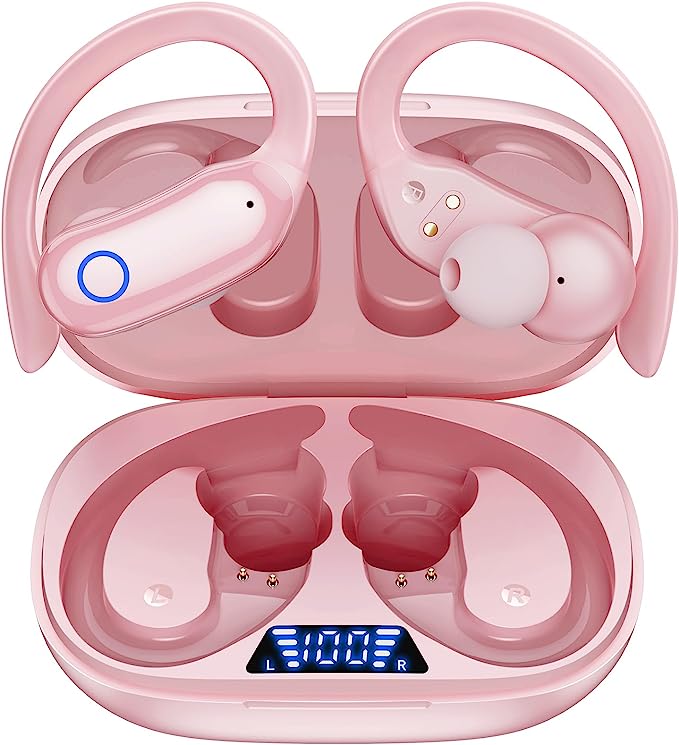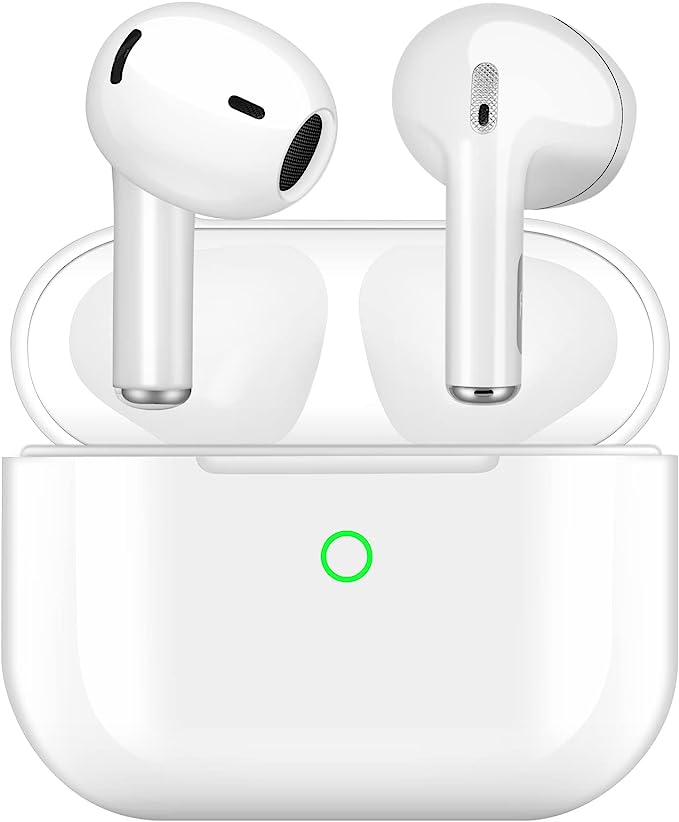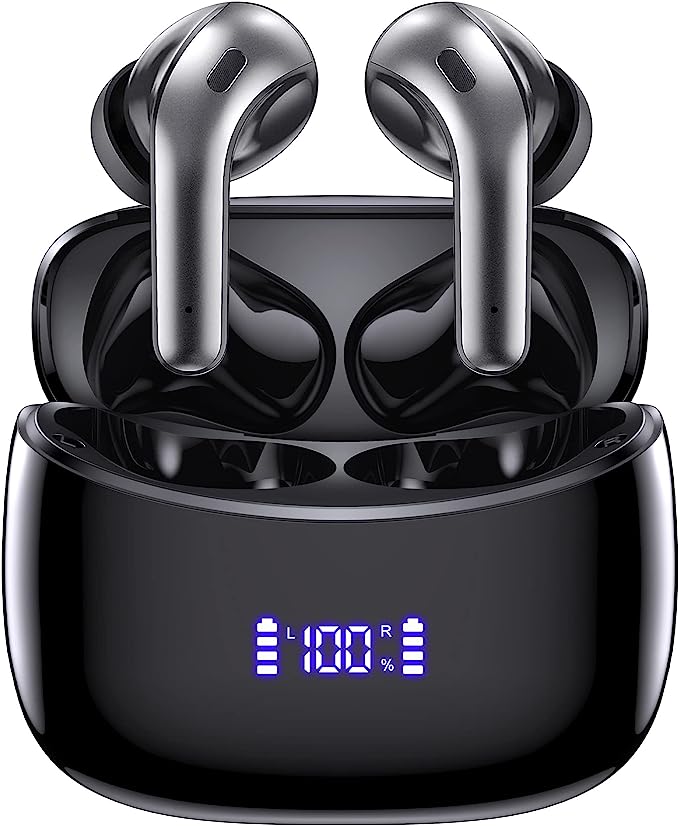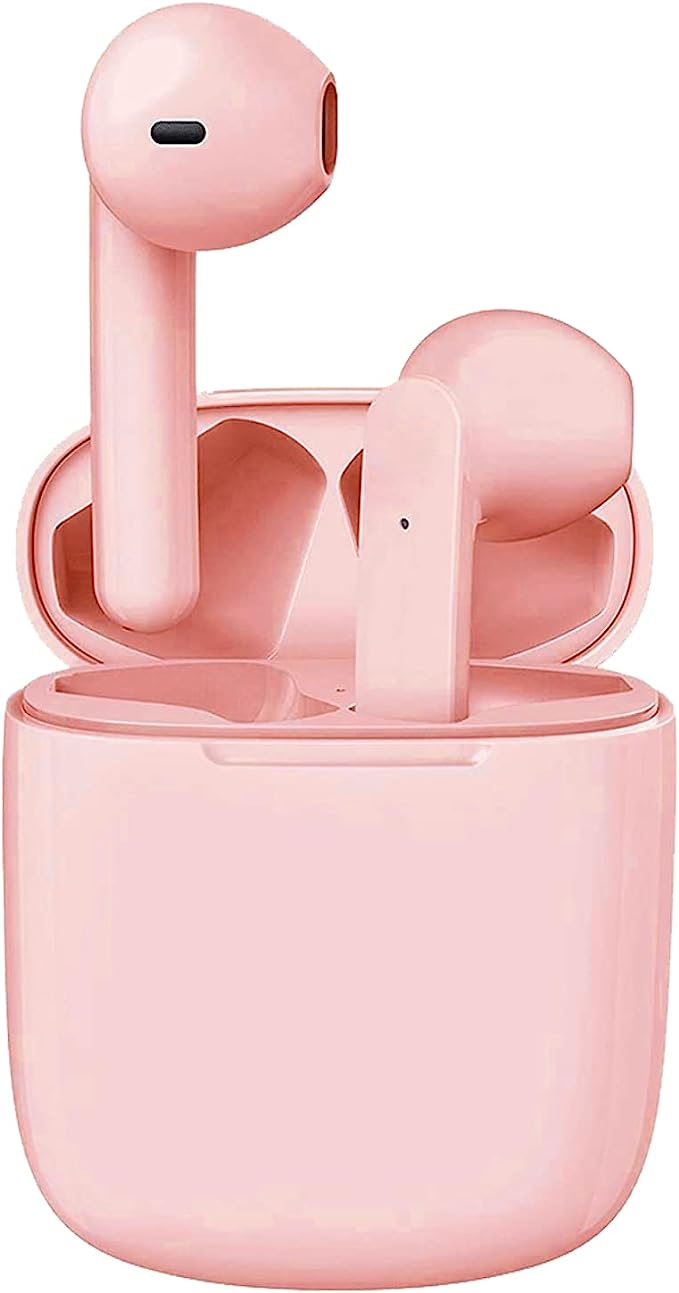Sungbesi J82 Wireless Earbuds: Your Affordable Sound Companion
Update on March 20, 2025, 6:06 a.m.
The hum of the city, the rhythm of your favorite song, the voice of a loved one – sound enriches our lives in countless ways. And increasingly, we experience these sounds wirelessly, thanks to the proliferation of Bluetooth earbuds. Tiny and convenient, these devices have revolutionized how we consume audio. But have you ever stopped to wonder about the intricate technology packed inside these miniature marvels? We’ll use the Sungbesi J82 wireless earbuds as a gateway to explore the fascinating world of audio technology.

Sound: The Basics
Before we dive into the specifics of earbuds, let’s start with the fundamentals: What is sound? In the simplest terms, sound is a vibration that travels through a medium, such as air, water, or even solids. These vibrations are created by a source, like a vibrating speaker cone or a plucked guitar string.
These vibrations create waves, characterized by their frequency and amplitude. Frequency, measured in Hertz (Hz), refers to the number of vibrations per second. The higher the frequency, the higher the pitch of the sound we perceive. Humans can typically hear frequencies ranging from 20 Hz (very low bass) to 20,000 Hz (very high treble). Amplitude, on the other hand, relates to the intensity or loudness of the sound. The larger the amplitude, the louder the sound.
Our ears are remarkable biological instruments designed to capture these vibrations. The outer ear funnels sound waves into the ear canal, where they vibrate the eardrum. These vibrations are then transmitted through tiny bones in the middle ear to the inner ear, where they are converted into electrical signals that our brain interprets as sound.

From Sound Waves to Electrical Signals: Transducers
Earbuds, and all speakers for that matter, rely on devices called transducers to convert electrical signals back into sound waves. A transducer is simply a device that converts one form of energy into another. In the case of earbuds, the transducer takes the electrical audio signal from your phone or computer and converts it into mechanical vibrations, which then create sound waves.
The Tiny Powerhouse: Dynamic Drivers
The most common type of transducer used in earbuds is the dynamic driver. Think of it as a miniature loudspeaker. It consists of three main components:
- Diaphragm: A thin, flexible membrane, often made of paper, plastic, or metal.
- Voice Coil: A coil of wire attached to the diaphragm.
- Magnet: A stationary magnet positioned near the voice coil.
When an electrical audio signal flows through the voice coil, it creates a fluctuating magnetic field. This field interacts with the permanent magnet, causing the voice coil (and the attached diaphragm) to vibrate. These vibrations create pressure waves in the air – sound waves – that we hear.
The Sungbesi J82’s Sound: 13mm of Potential
The Sungbesi J82 earbuds utilize a 13mm dynamic driver. The size of the driver is often associated with the potential for better bass response. A larger diaphragm can move more air, which generally translates to a more powerful and impactful low-frequency sound. However, driver size isn’t the only factor determining sound quality. The material of the diaphragm, the strength of the magnet, the precision of the manufacturing, and the overall design of the earbud housing all play significant roles. While the 13mm driver in the J82 suggests a capability for decent bass, the overall sound profile will be a result of all these interacting factors. Without detailed measurements of frequency response and Total Harmonic Distortion (THD), it’s impossible to make definitive claims about the absolute sound quality. However, for everyday listening at a budget-friendly price point, a 13mm driver offers a solid foundation.
Digital to Analog
The digital audio stored on your device needs converting. DAC, short for digital-to-analog converter, is just the chip for the job. The chip’s quality can significantly impact the fidelity of the converted signal. The Sungbesi probably uses a fairly standard, integrated DAC, focusing on cost-effectiveness over audiophile-grade performance.
Cutting the Cord: Bluetooth Technology
The “wireless” in wireless earbuds refers to the use of Bluetooth technology. Bluetooth is a short-range wireless communication standard that uses radio waves in the 2.4 GHz frequency band to transmit data between devices. It’s a complex technology with various profiles that define specific functionalities. For audio, the most relevant profile is A2DP (Advanced Audio Distribution Profile).
When you pair your Sungbesi J82 earbuds with your phone, they establish a Bluetooth connection. Your phone then transmits the digital audio data wirelessly to the earbuds. The earbuds receive this data, decode it, convert it to an analog signal, and then send that signal to the dynamic drivers to produce sound.

Bluetooth and Sound Quality: Codecs Matter
The quality of the wireless audio transmission depends heavily on the codec used. A codec is a piece of software that encodes and decodes digital audio data. Think of it as a translator between your phone and your earbuds. There are several different Bluetooth audio codecs, each with its own strengths and weaknesses:
- SBC: The standard, mandatory codec. It’s universally supported but offers the lowest audio quality.
- AAC: Commonly used by Apple devices. It offers better sound quality than SBC.
- aptX: A family of codecs from Qualcomm that offer improved sound quality and lower latency compared to SBC.
- LDAC: A codec from Sony that supports high-resolution audio.
The provided information about the Sungbesi J82 doesn’t specify which codecs it supports. This is common for budget-friendly earbuds, which often prioritize cost savings over supporting higher-quality codecs like aptX or LDAC. It’s highly likely that the J82 supports SBC and possibly AAC. The absence of explicit codec information is a common trade-off in this price range.

Staying Connected: Pairing and Touch Controls
The Sungbesi J82 features automatic pairing. This means that once you’ve initially paired the earbuds with your device, they’ll automatically connect whenever you open the charging case (assuming your device’s Bluetooth is enabled). This convenience feature relies on the earbuds “remembering” the previously paired device.
Touch controls on the earbuds allow you to manage playback and calls without having to interact directly with your phone. These controls typically use capacitive touch sensors, which detect the change in capacitance caused by your finger touching the surface of the earbud. Different gestures (taps, swipes, long presses) can be programmed to trigger different actions, such as play/pause, skip track, answer/reject calls, and activate voice assistants.
The Elements of Style: Design and form factor.
The J82s are “in-ear” earbuds. This means they’re designed to fit snugly inside your ear canal, creating a seal that helps to isolate you from external noise. This passive noise isolation is different from active noise cancellation (ANC), which uses microphones and electronic processing to actively counteract ambient sounds. The J82s do not feature ANC. The effectiveness of passive noise isolation depends heavily on the fit of the earbuds and the ear tips used.
Weathering the Storm: IPX6 Water Resistance
The Sungbesi J82 boasts an IPX6 waterproof rating. IP (Ingress Protection) ratings are a standardized way of classifying the degree of protection an enclosure provides against intrusion from solids (like dust) and liquids. The “X” in IPX6 indicates that the device has not been specifically tested for dust protection. The “6” refers to the level of protection against liquids.
Specifically, IPX6 means that the earbuds can withstand powerful water jets. This is defined as water projected by a 12.5mm nozzle from any direction at a flow rate of 100 liters per minute for at least 3 minutes. In practical terms, this means the J82s are protected against sweat, rain, and splashes, making them suitable for workouts and outdoor use. However, it’s important to note that IPX6 does not mean the earbuds are waterproof enough for submersion. Don’t take them swimming!

Powering Your Sound: Battery Life and Charging
The Sungbesi J82, like all wireless earbuds, relies on built-in rechargeable batteries. The earbuds themselves are stated to provide approximately 6-7 hours of playtime on a single charge (the provided information contained a slight discrepancy, so we present a range). The charging case, which also contains a battery, can provide additional charges, extending the total playtime to around 24 hours.
The batteries used in these types of earbuds are typically lithium-polymer batteries. These batteries are favored for their high energy density (meaning they can store a lot of energy in a small space), light weight, and relatively long lifespan. Lithium-polymer batteries work on the principle of lithium ions moving between a positive electrode (cathode) and a negative electrode (anode) through an electrolyte. During discharge (when the earbuds are in use), lithium ions move from the anode to the cathode, releasing energy. During charging, the process is reversed. The charging case typically connects to a power source via a USB cable.
It takes approximately one hour to fully recharge the earbuds when they are placed inside the charging case. The charging case itself will also need to be recharged periodically. Battery life is affected by several factors, including listening volume, Bluetooth codec used, and even the ambient temperature.
Talking it Out: Microphone Technology
The Sungbesi J82 includes a built-in microphone, allowing you to make phone calls and use voice assistants. The provided information mentions “reducing call noise” but doesn’t specify the exact noise-canceling technology employed.
Microphone noise cancellation is crucial for clear communication in noisy environments. Several techniques are used to achieve this, including:
- Multiple Microphones: Using two or more microphones, the system can differentiate between the user’s voice (which is close to one microphone) and background noise (which is picked up by both microphones).
- Digital Signal Processing (DSP): Algorithms are used to analyze the audio signals and filter out unwanted noise.
- Environmental Noise Cancellation (ENC): This technology focuses on suppressing ambient sounds, like traffic or wind noise.
- Clear Voice Capture (cVc): A technology developed by Qualcomm, cVc aims to improve voice clarity during calls.
Without knowing the specific technology used in the J82, it’s difficult to assess the effectiveness of its noise reduction. However, for typical everyday use in moderately noisy environments, the built-in microphone should provide adequate call quality. In very loud environments, you might find that background noise is still noticeable to the person on the other end of the call.
A Snug Fit: Ergonomics
The J82 earbuds are designed to be lightweight (3.5g per earbud) and to fit snugly within the ear canal. This in-ear design contributes to both comfort and passive noise isolation. Ergonomics is the science of designing products to fit the human body and its movements. In the context of earbuds, good ergonomic design considers factors such as:
- Shape: The shape of the earbud housing should conform to the general contours of the ear.
- Size: The earbuds should be small enough to fit comfortably without causing pressure points.
- Weight: Lightweight earbuds are less likely to cause fatigue during extended use.
- Ear Tips: The ear tips, which are the part that actually enters the ear canal, should be made of a soft, pliable material (usually silicone) and come in different sizes to accommodate different ear shapes.
A secure and comfortable fit is essential not only for comfort but also for optimal sound quality. A good seal between the ear tip and the ear canal helps to block out external noise and ensures that the bass frequencies are properly reproduced.
Evolution of Earbuds: From Wired to Wireless
The journey from bulky headphones to tiny, wireless earbuds is a testament to technological advancement. Early headphones, dating back to the late 19th and early 20th centuries, were primarily used for telephone and radio communication. They were large, heavy, and often uncomfortable.
The development of portable music players, like the Walkman in the late 1970s, spurred the demand for smaller, more portable headphones. Earbuds, which fit directly into the ear, emerged as a popular alternative to over-ear headphones. These early earbuds were wired, connecting to the audio source via a cable.
The advent of Bluetooth technology in the late 1990s paved the way for wireless audio. Early Bluetooth headsets were primarily used for phone calls, but as the technology matured, it became increasingly suitable for music listening. The introduction of truly wireless earbuds, with no cable connecting the two earpieces, marked a significant milestone. These devices, like the Sungbesi J82, represent the culmination of decades of innovation in audio technology.

The Future of Sound
Wireless earbud technology continues to evolve rapidly. We can expect to see several trends in the coming years:
- Improved Sound Quality: Advances in Bluetooth codecs and driver technology will continue to push the boundaries of wireless audio fidelity.
- Longer Battery Life: More efficient batteries and power management systems will extend playtime.
- Smarter Noise Cancellation: AI-powered noise cancellation will become even more effective at adapting to different environments.
- Lower Latency: Reduced latency will be crucial for applications like gaming and virtual reality.
- Biometric Sensors: Earbuds may incorporate sensors to track health metrics like heart rate and body temperature.
- Spatial Audio: More immersive audio experiences that simulate a three-dimensional soundstage.
- Integration with Other Devices: Seamless connectivity with smartphones, computers, and other smart devices.
Wrap-up
The Sungbesi J82 wireless earbuds, while a budget-friendly option, offer a glimpse into the complex and fascinating world of audio technology. From the physics of sound waves to the intricacies of Bluetooth communication, these tiny devices embody a remarkable amount of engineering. While they may not boast the audiophile-grade performance of high-end models, they provide a convenient and accessible way to experience the benefits of wireless audio. The J82, and wireless earbuds in general, demonstrate how far we’ve come in our quest to make technology smaller, more portable, and more integrated into our daily lives. They also remind us that even seemingly simple devices are built upon layers of scientific and engineering innovation.
